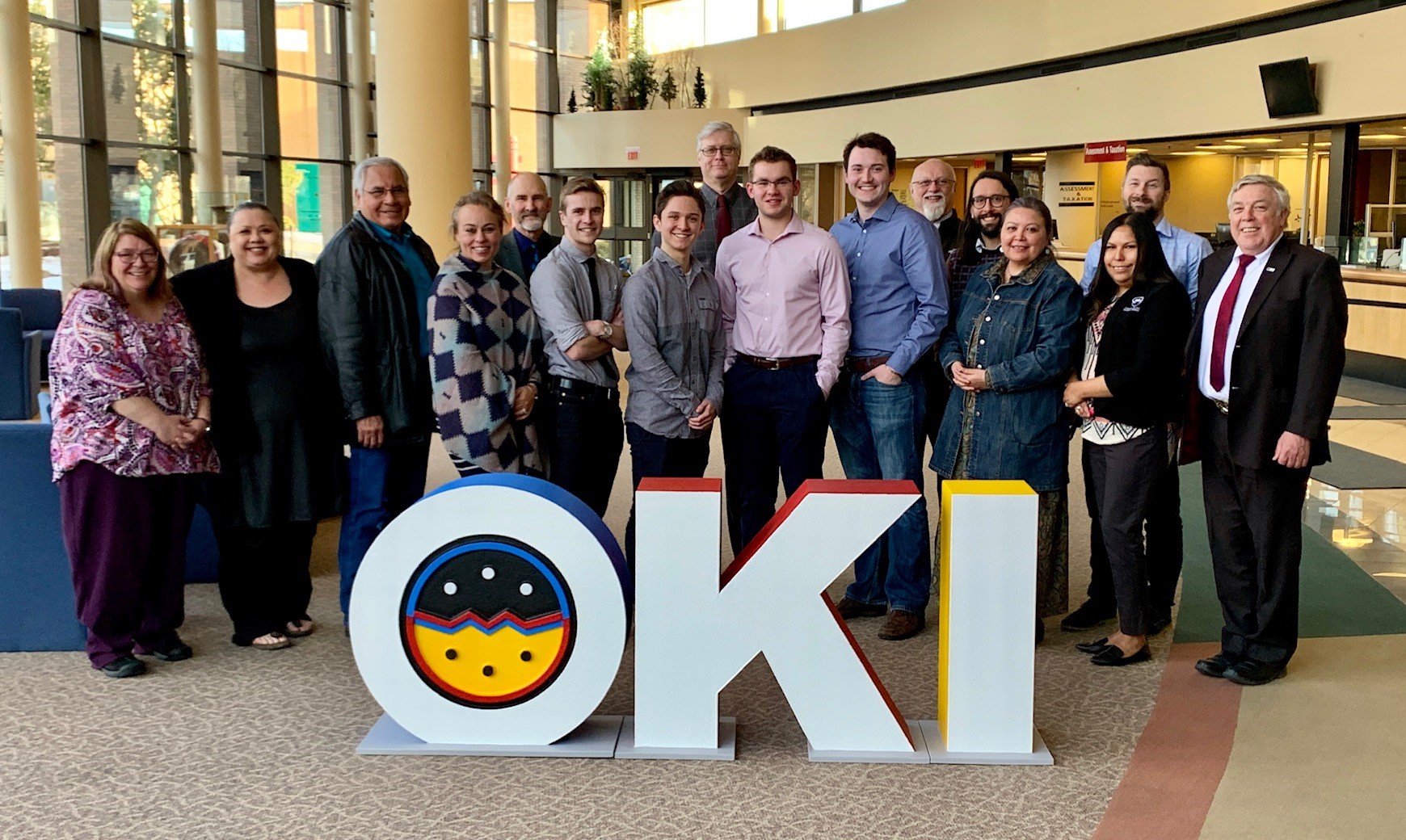
A unique collaboration between the City of Lethbridge and Lethbridge College has produced an opportunity for a group of Engineering Design and Drafting Technology students.
As part of its commitment to reconciliation, the City plans to permanently fly the Blackfoot Confederacy flag and the Reconciliation Lethbridge flag, as well as having dedicated poles to fly flags to celebrate other important community events and partners such as Lethbridge Pride Week and the Alberta Summer Games. Currently, these can only be accommodated by lowering the city’s own flag.
So city officials invited students to submit designs for the revamped flag poles, to be considered as part of the final selection process. Two student designs were submitted and considered as part of the competition, which the Reconciliation Lethbridge Advisory Committee deliberated on. Co-chair of the committee, Trina Tallows, says both designs showed creativity and consideration of culture.
“What was great about this process was seeing both groups of students engaged and learning about Blackfoot culture,” says Tallows. “It was a great opportunity for those students to take what they had learned in their research and apply it in their field of study.”
As for the winning design, dynamic duo Aidan McLean and Nathanael Heyburn took the honours after a closely split vote by the RLAC members.
“The biggest take-away for me was having to consider the cultural elements of the final design plus breaking down the technical elements to a group of people who don’t do this type of work,” says Heyburn. “It was a good experience and one not many students can say they’ve gotten to go through.”
The winning team’s design proved to be unique, innovative and inspired by Blackfoot culture, says Marcia Black Water, Lethbridge College Indigenous Student Initiatives and Community Relations coordinator.
“At the beginning of the project, we met with the students and the representatives from the City to introduce Blackfoot culture to the students and provided a day of learning for them,” says Black Water. “We saw some of those pieces of learning woven into the final designs which were presented today and that was wonderful to see.”
The second-place team, comprised of Matt Hagedorn and Kai Matsalla, agreed that the experience was well worth the effort, adding that they’ve walked away with a new understanding of Indigenous culture.
“Before our day of learning, I had limited exposure to Blackfoot culture other than what I had learned in high school, but it was a pretty huge learning opportunity and totally something I’d recommend to anyone studying in our program,” says Matsalla. “It was super exciting to be part of a project that could potentially be seen by everyone who walks up to City Hall for years to come.”
“The design competition was a great way to involve students in our city who are building the skills and expertise to do this type of work as a career,” says the city’s Indigenous Relations advisor, Perry Stein. “It was also an excellent opportunity for students to engage with and learn about Blackfoot culture and Reconciliation while considering how to design a piece of physical infrastructure that will stand for years to come.”
The winning student design will be considered in the final proposals for the permanent flag pole structure, which is targeted for completion before September 2020.